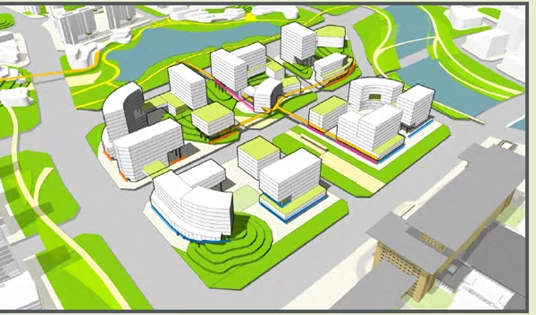 Standardization of eGovFrame
Standardization of eGovFrame
The Republic of Korea’s e-Government Standard Framework (eGovFrame) provides a classic example of how to build a public information system that is open, easy to integrate into, and even easier to build upon. Instead of different departments building their own systems and then trying to get them to work together, eGovFrame does the opposite; it provides a central architecture into which departments’ information systems integrate. The systems are all built on the same open-standard computer language which is freely available to the different departments and facilitates seamless integration of the entire ecosystem.
Feeling a bit lost?
Alright, think of the eGovFrame as a home, where the central part provides the standard functions like a living room, kitchen, bedrooms, and bathrooms. Then, let’s assume that the four people who live in the home have different interests; one is an artist, one likes to work with tools, another is a wine enthusiast, and the fourth just sits around the whole day watching movies. So, the remaining rooms in that home will probably be a studio, a workshop, a wine cellar, and a home theater. If the architect has done his job well, this will be a beautiful, fully integrated home that is easy to adapt and connect to other houses.
Common modules that can be shared and reused
The eGovFrame was introduced to us when Korea’s National Information Society Agency shared its experience at a World Bank-organized event on Digital, the Door to a Better World: Digital Government Strategy and Cases in Korea. The eGovFrame provides a predefined set of features and functions required to develop and manage public information systems. It provides common modules that can be shared and reused across organizations - such as government ministries, local governments, and public agencies. Individual organizations can then add the “studio” and “game rooms” with specific features and services that are unique to them.
Standardization of eGovFrame:
Primarily, this standard framework has improved the quality of digital government services provided by the Government of Korea based on the standardized infrastructure and has greatly increased the efficiency of government’s ICT investments. There are other benefits too. Here are five:
- eGovFrame increases productivity and minimizes redundant software development by providing common essential functions and allowing its developers to focus on defining and building the central infrastructure.
- It increases the reusability of application systems as the standardization of the development framework allows components already developed to be reused in the applications of other departments.
- It increases the interoperability of applications due to its standardized interface.
- It promotes standardization of the software code by providing standardized infrastructure for presentation, business logic processing, and data processing.
- It promotes developers' use of open-source software due to its standard framework and strengthens collaboration between various stakeholders.
Continuously improving and innovating
The main feature in the development of eGovFrame is its open innovation approach. In all, 48 open sources were selected, based on reviews of licenses, performances, and quality of the software programs. The source codes, including outputs, were provided at no cost through the eGovFrame website. Next, opinions and experiences from diverse stakeholders, such as government organizations, public institutions, and IT developers, were collected to build consensus. The eGovGrame Center was set up, which provides technical support, training, and compatibility verifications and conducts major upgrades and R&D to improve and maintain a sustainable open ecosystem.
This whole-of-government approach has played a critical role in developing and implementing eGovFrame. By placing it in the custody of a single agency, the government has entrusted that agency to ensure that the eGovFrame is continuously improved, based on open innovation strategies. For example, the Korean government is still trying to attract new ideas from the private sector. It recently hosted a contribution event that encouraged developers to access the eGovFrame GitHub and provide suggestions on how to improve the eGovFrame.
Since its launch in 2009, eGovFrame has been downloaded over 900,000 times and applied in over 5,000 projects in areas such as administration, transportation, education, health care, customs, and land. Also, eGovFrame has attracted attention from other parts of the world. Thanks to its open-source status, eGovFrame has been applied in 33 digital government projects in 17 other countries including Vietnam, Mexico, Nigeria, and Sudan.




Join the Conversation